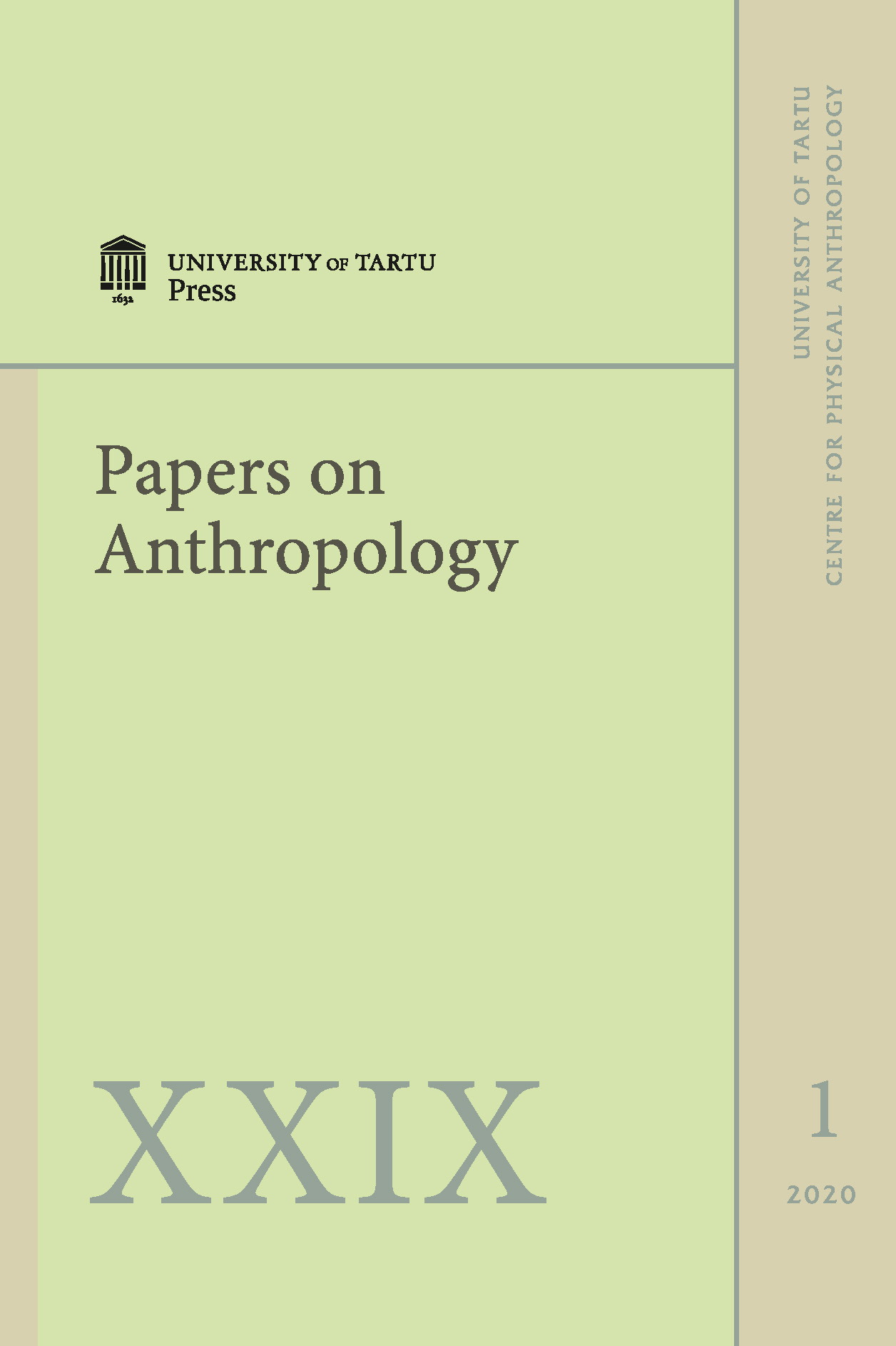Evaluation of innervation in cleft affected oral mucosa
DOI:
https://doi.org/10.12697/poa.2020.29.1.04Keywords:
orofacial cleft, innervation, oral mucosaAbstract
Orofacial clefts are one of the most common pathologies present at birth. The aim of the study was to evaluate the presence of PGP 9.5, substance P, VIP, CGRP, myelin and NFG in cleft affected mucosa of alveolar process, soft and hard palate, vomer and lip.
Methods. Orofacial cleft affected mucosa tissue samples were obtained during surgical cleft correction from 21 children aged from 2 months to 9 years and 10 months. Prepared tissue sections were stained by immunohistochemistry for PGP 9.5, substance P, VIP, CGRP, myelin and NGF. The intensity of staining was graded semiquantitatively.
Results. Mostly moderate number and numerous PGP 9.5, substance P, VIP, CGRP, myelin and NGF-containing nerve fibres and nerve fibre bundles and CGRP and NGF positive keratinocytes were detected. The most immunoreactive for PGP 9.5, myelin and NGF were nerve fibres, nerve fibre bundles and keratinocytes in lip mucosa tissue samples. Typically, PGP 9.5-containing nerve fibres were detected in subepithelium close to basal lamina, near blood vessels; thin PGP 9.5 positive nerve fibres were also observed between keratinocytes. Immunoreactivity of CGRP was higher than of substance P in nerve fibres and nerve fibre bundles. Statistically significant positive correlation was observed between all markers in subepithelium of all tissue samples.
Conclusions. The proved statistically significant strong inter-correlation and the number of general neuropeptide-containing innervation (PGP 9.5), sensory nerves (CGRP and substance P), and parasympathetic nerves (VIP) is similar in orofacial cleft affected oral mucosa to such described in scientific literature healthy oral mucosa, except the alveolar process covering mucosa where the above innervation varies.
Very strong and strong statistically significant positive correlations between the number of PGP 9.5, substance P, CGRP and VIP positive structures on the one hand, and NGF and myelin, on the other hand, indicate a connection between quality markers and common neuropeptide-containing, sensory and parasympathetic innervation in cleft affected oral tissue.
The number of PGP 9.5, NGF and myelin immunoreactive neuronal structures in lip mucosa is higher than in the alveolar process, soft and hard palate and vomer mucosa, suggesting the significance of qualitative common innervation in this organ even in the cleft affected case.

